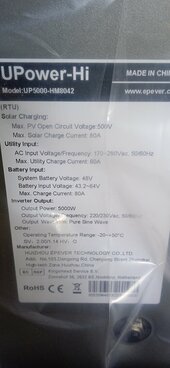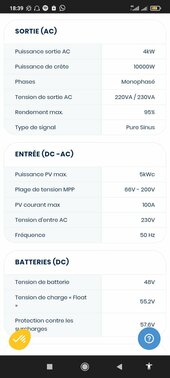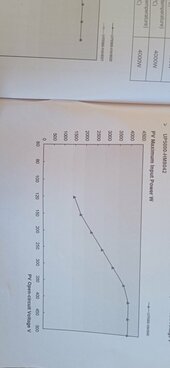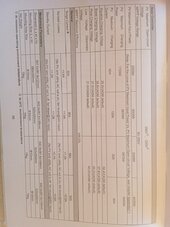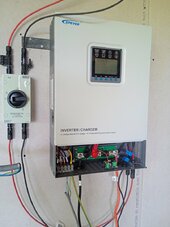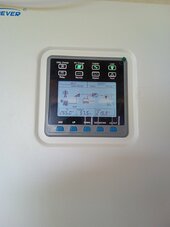matsimaginarium
New Member
Bonjour,
I am currently renovating a barn/house for my family and I to live in in the south of France. It has no mains electricity and I do not plan to get it so will be relying entirely on the solar system and a backup generator for the foreseeable future. I would really appreciate advise on this as it is not one of my strengths.
I have purchased the following
-Epever UP5000 Hybrid Inverter/Charger
-4x Plyontech US2000c
-16x Longi 410w panels
They will be installed on a roof of approx 20° facing South-east.
I had planned to wire them in 8 pairs to keep the current low. Is this the optimum set up?
The charger controller is only rated to handle 5Kw of panels but I have 6.5Kw. I plan to have the possibility of isolating two pairs of the panels from the system during summer when they might produce close to peak power. Does this sound okay or is there are better option?
I have attached some photos that will hopefully be helpful. Thanks in advance, any help at all is most appreciated.
Mat
I am currently renovating a barn/house for my family and I to live in in the south of France. It has no mains electricity and I do not plan to get it so will be relying entirely on the solar system and a backup generator for the foreseeable future. I would really appreciate advise on this as it is not one of my strengths.
I have purchased the following
-Epever UP5000 Hybrid Inverter/Charger
-4x Plyontech US2000c
-16x Longi 410w panels
They will be installed on a roof of approx 20° facing South-east.
I had planned to wire them in 8 pairs to keep the current low. Is this the optimum set up?
The charger controller is only rated to handle 5Kw of panels but I have 6.5Kw. I plan to have the possibility of isolating two pairs of the panels from the system during summer when they might produce close to peak power. Does this sound okay or is there are better option?
I have attached some photos that will hopefully be helpful. Thanks in advance, any help at all is most appreciated.
Mat




